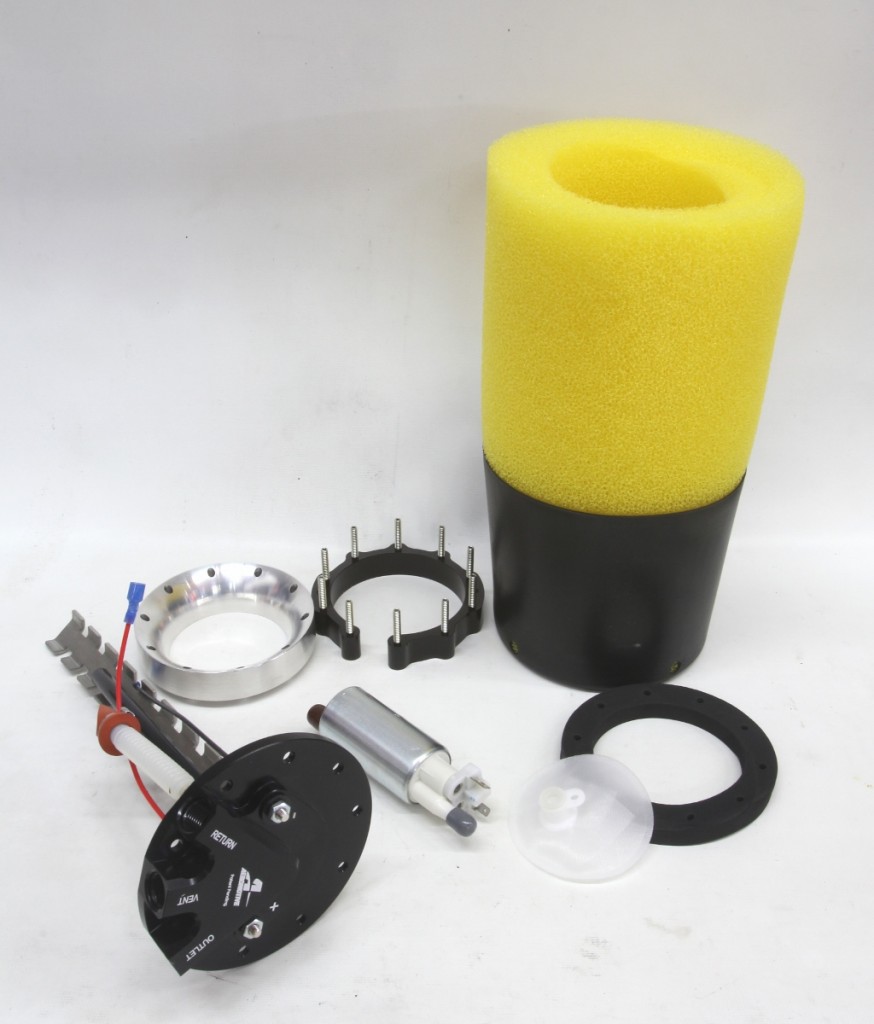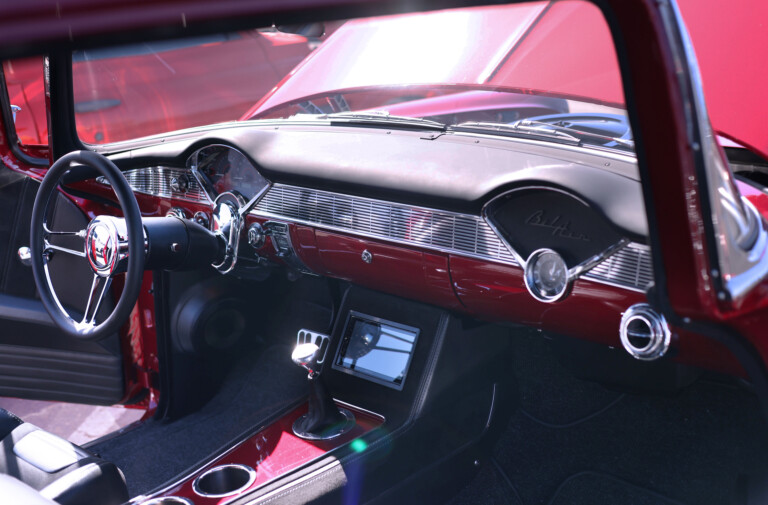Words and Photos: Jeff Smith
So how was the tour this year?”
“Oh, you mean the Vapor Lock Nationals?”
That was the comment from a survivor of 2016’s jaunt across the south, during which hundreds of hot rods braved blazing heat and high humidity in search of some summer fun. A jaded observer might think vapor lock should have disappeared from our 21st Century electronic fuel-injected engine lexicon. But clearly, at least some of the world still faces challenges when it comes to moving fuel from the tank to the engine. Let’s investigate the phenomenon of vapor lock and how to avoid a stall on your next summertime adventure.
We spoke with Aeromotive’s Steve Matusek, who hit us with a quote all hot rodders should stencil on their foreheads. “The most important point in any fuel delivery system,” Steve said, “is the inlet to the pump.” What does the pump’s inlet have to do with vapor lock? In a word — everything.
All pumps do a great job of creating pressure and moving fuel from the tank to the engine. But to do that, they rely on unrestricted inlet access to fuel. Let’s take a few moments to learn about how pumps operate. First, pumps don’t “suck.” They instead create low pressure on the inlet side and rely on atmospheric pressure to push the fuel toward the area of the low pressure.
For a well-designed fuel delivery system, all you have to do is study a typical OE system. All new cars locate the fuel pump very near the lowest part of the tank so the pump is submerged in fuel and cooled inside and out.
But, an equally important reason the pump is located inside the fuel tank is to use the weight of the standing height of fuel to help push gasoline into the pump inlet. If the pump inlet is poorly positioned above the level of the fuel in the tank, however, this makes the pump work much harder, radically reducing efficiency.
Let’s design a bad system to see why vapor lock occurs. Say we have just built a killer Pro Touring car with an 800-hp engine. The fuel delivery system is often near the bottom of the construction list, so in our haste, we bolted an external pump to the kick-up area above the rear axle and plumbed a -8 line from the pickup tube in the tank to the pump — creating a vertical climb of 12 inches.
The fuel pump now has to work extremely hard. It must create significant low pressure on the inlet side in order to barely move fuel up this massive vertical rise. Compounding the problem, when fuel is subjected to low pressure, it will begin to change from a liquid to a gas — also known as boiling. This occurs because there is less pressure pushing on the fuel molecules to hold them together.
The video below shows how water in a sealed glass container boils at room temperature when subjected to extreme low pressure. Fuel reacts in exactly the same fashion.
If gasoline under low pressure is not good, let’s add to the fuel’s woes with triple-digit air temperature. Gasoline is a blend of multiple hydrocarbon chains. Some components are called aromatics, which are the high ends of the fuel designed to boil at relatively low temperatures. This blend of hydrocarbons changes depending upon the season.

An outstanding way to convert to a more efficient high pressure fuel system is to use Aeromotive’s Phantom conversion. It places the pump inlet near the bottom of the fuel tank, surrounding the inlet with a fuel reservoir contained by a large standing column of foam that maintains fuel around the pump inlet at all times.
For summertime operation, the fuel is blended to offer multiple boiling points, with a small portion designed to boil at “low” temperatures of 70 degrees, while the more stable ends will boil at a much higher temperature, perhaps 150 to 175 degrees. The higher temperature is what the fuel could easily experience sitting in a fuel rail on an EFI engine. The extreme low ends will vaporize at extremely high temperatures, which we won’t worry about here.
It’s not unusual to see fuel temps of 120 to 130 degrees (and higher) when stuck in traffic on a 100-degree summer day. All of these fuel boiling temperatures are based on standard pressure. But, with a less efficient inlet system on our Pro Touring system, the fuel will vaporize much more quickly in the inlet hose running up to the pump because the fuel is operating at a much lower pressure.
The combination of low pressure and high temperature creates a perfect storm of boiling fuel that quickly causes the pump to cavitate. That’s when the pump quits working because it cannot pump a vapor. Vapor in the pump reduces cooling, causing the pump to overheat, which closes up the clearances and makes the pump lock up. Enthusiasts universally blame the pump in these situations, when the reality is usually the fault of the fuel delivery system design.
In the case of a mechanical fuel pump, high temperatures and a long delivery line from the tank to the pump under low pressure creates a perfect situation to cause vapor lock. This is especially true if the inlet side is restricted with a kinked line, restrictive in-tank filter, or even a poorly vented tank. Any of these will cause fuel delivery problems.
There is much more to this story than we can detail here, but these are the major concerns that must be addressed. Now that you know the major causes of vapor lock and that they generally occur on the non-pressure side, you can affect solutions to make the problems disappear. It’s that simple. So forget that voodoo doll and think instead about ways of making it easier for your fuel pump to do its job.
Sources: Aeromotive, aeromotiveinc.com; Holley Performance Products, holley.com

















